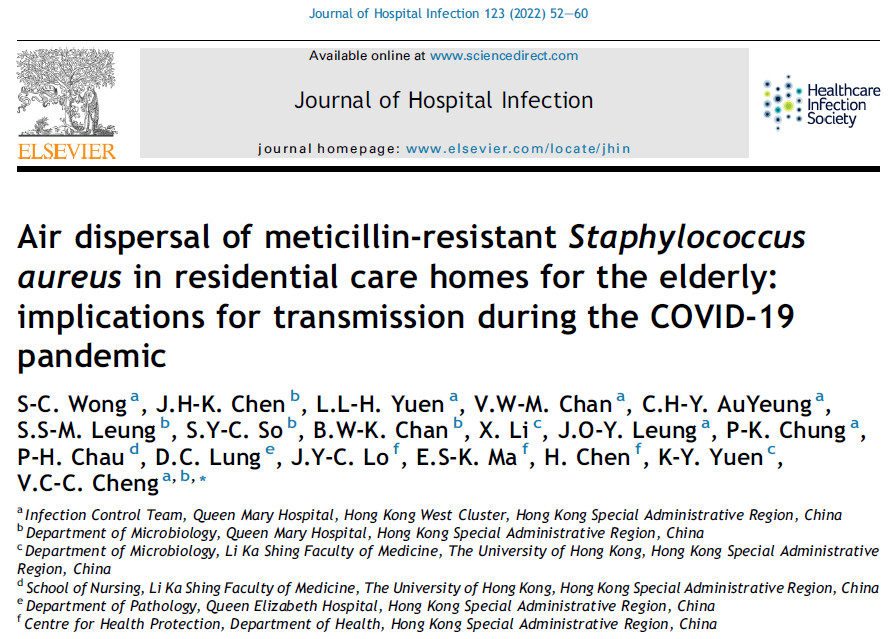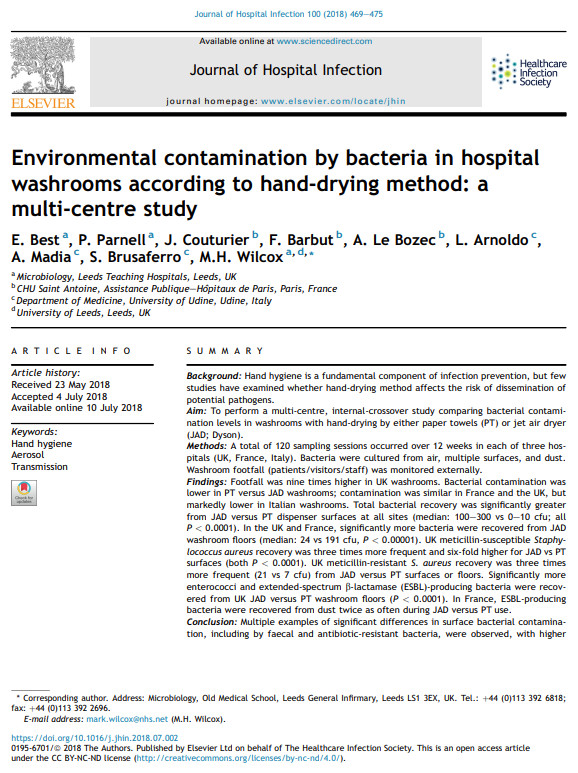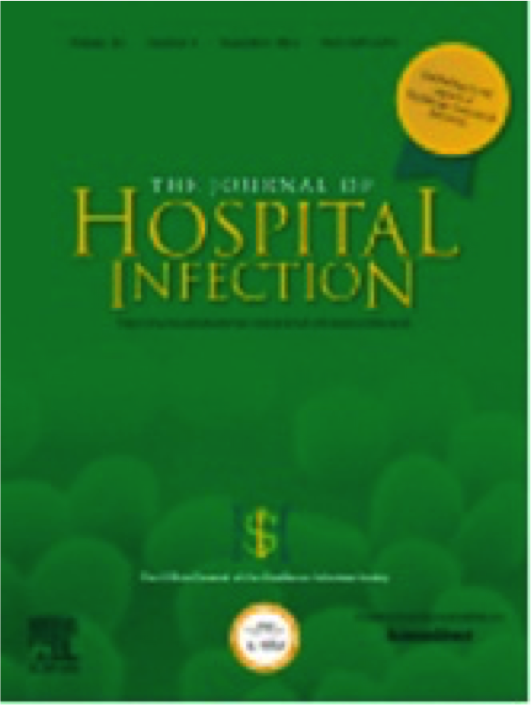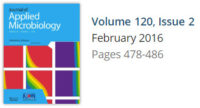A recent Hong Kong study, published on the Journal of Hospital Infection, confirms that air dispersal can be an important mechanism of dissemination of the well known MRSA (Meticillin Resistant Staphylococcus aureus)
This has important implications for the risk of cross infection in hospitals and in RCHE (Residential Care Homes for the Elderly)

A number of peer reviewed and published studies have proven that fast air movements and turbulence, such has those generated by Electric Hand Driers, can disseminate bacteria and viruses (see the studies at the bottom of this page). This recent study made in Hong Kong, signed by 18 Doctors and published in 2022 in the Journal of Hospital Infection, confirms the risk of MRSA dissemination, particularly in Hospitals and in Homes for the Elderly, caused by air movements, in this case created by air fans. In the multi-centre study carried in 2018, an important finding was that MRSA was detected more frequently when using Hands Dryers. This study can be found at this link (Antibiotic-resistant bacteria – including MRSA and ESBL-resistant enterococci – were detected more frequently in the washrooms when jet air dryers were in use)
This Hong Kong based, Air Dispersal study was approved by the Institutional Review Board of The University of Hong Kong/ Hospital Authority Hong Kong West Hospital Cluster.
Following are some passages of this study, which make particular reference to the effect of fans on MRSA contamination in Residential Care Homes for the Elderly.
“The presence of an indoor fan, which is used as an additional air ventilation support in some RCHEs, and whether the indoor fan was in use during air sampling were recorded at the time of visit.”
“Air dispersal of MRSA may be an important mechanism of dissemination in RCHEs with operating indoor fans.”
“The detection of MRSA in air samples was significantly associated with the operation of indoor fans in the RCHEs (100%, 4/4 vs. 0%, 0/8, P¼0.002).”
“During our site visit to RCHEs to introduce the MRSA control programme and collect baseline specimens from residents, staff, environment and air, we noticed that most RCHEs were equipped with indoor fans in addition to the air-conditioning systems. Detection of MRSA in settle plates were significantly associated with the operation of indoor fans at the time of specimen collection. None of the RCHEs with indoor fans turned off had MRSA detected from air samples. Improving indoor ventilation is increasingly emphasized during the COVID-19 pandemic in view of the airborne transmission potential of COVID-19 [28e31], and repeated episodes of COVID-19 transmission in designated quarantine hotels [32,33]. However, the use of indoor fans may paradoxically facilitate air dispersal of MRSA in RCHEs, especially given the high prevalence of MRSA among residents. Air dispersal of MRSA has only been demonstrated in a few studies, conducted among nasal carriers undergoing experimentally induced rhinovirus infection [34], patients with MRSA infection or colonization of the respiratory tract [35] and burn patients in the intensive care unit [36]. This is the first study demonstrating air dispersal of MRSA in more than one RCHE.
(Highlighting is done by ETS)
Use this link to have access to the complete study.
Other studies about air dryers air dispersal impact
1. Environmental contamination by bacteria in hospital washrooms according to hand-drying method: amulti-centre study.
E. Best, P. Parnell, J. Couturier, F. Barbut, A. Le Bozec, L. Arnoldo, A. Madia, S. Brusaferro, M.H. Wilcox
Journal of Hospital Infection; 100: 469-475. See also the page: Multisite hospital study demonstrates hand drying method can affect risk of bacterial dissemination
2. Microbiological comparison of hand drying methods: the potential for contamination of the environment, user and bystander. E.L. Best,1 P. Parnell,1 M.H. Wilcox 1,2 – Microbiology Department, Old Medical School, Leeds General Infirmary, Leeds Teaching Hospitals NHS Trust1 & University of Leeds,2 Leeds LS1 3EX, UK. Journal Hospital Infection 2014; 88:199-206. See also the page: Microbiological comparison of hand drying methods …
3. “Comparison of different hand-drying methods: the potential for airborne microbe dispersal and contamination” and is authored by Keith Redway (Department of Biomedical Sciences, Faculty of Science and Technology, University of Westminster, London, UK) and by E.L. Best (Microbiology Department, Old Medical School, Leeds General Infirmary, Leeds Teaching Hospitals NHS Trust, Leeds UK). Journal Hospital Infection 2015;89:215-217. See also the page: Comparison of different Hand drying methods
4. Evaluation of the potential for virus dispersal during hand drying: a comparison of three methods P.T. Kimmitt and K.F. Redway. Department of Biomedical Sciences, Faculty of Science and Technology, University of Westminster, London, UK. Journal of Applied Microbiology 120, 478–486 © 2015 The Society for Applied Microbiology. See also the page: Hand drying with single-use towels reduces the risk of the transmission of viruses
5. Pilot Study to determine whether microbial contamination levels in hospital washrooms are associated with hand-drying method
M.H. Wilcox Correspondence information about the author M.H. Wilcox, E.L. Best P. Parnell Microbiology, Leeds Teaching Hospitals NHS Trust & University of Leeds, Leeds, UK Journal of Hospital infection 2017; 97 200-2003. See also the page: Pilot Study
















